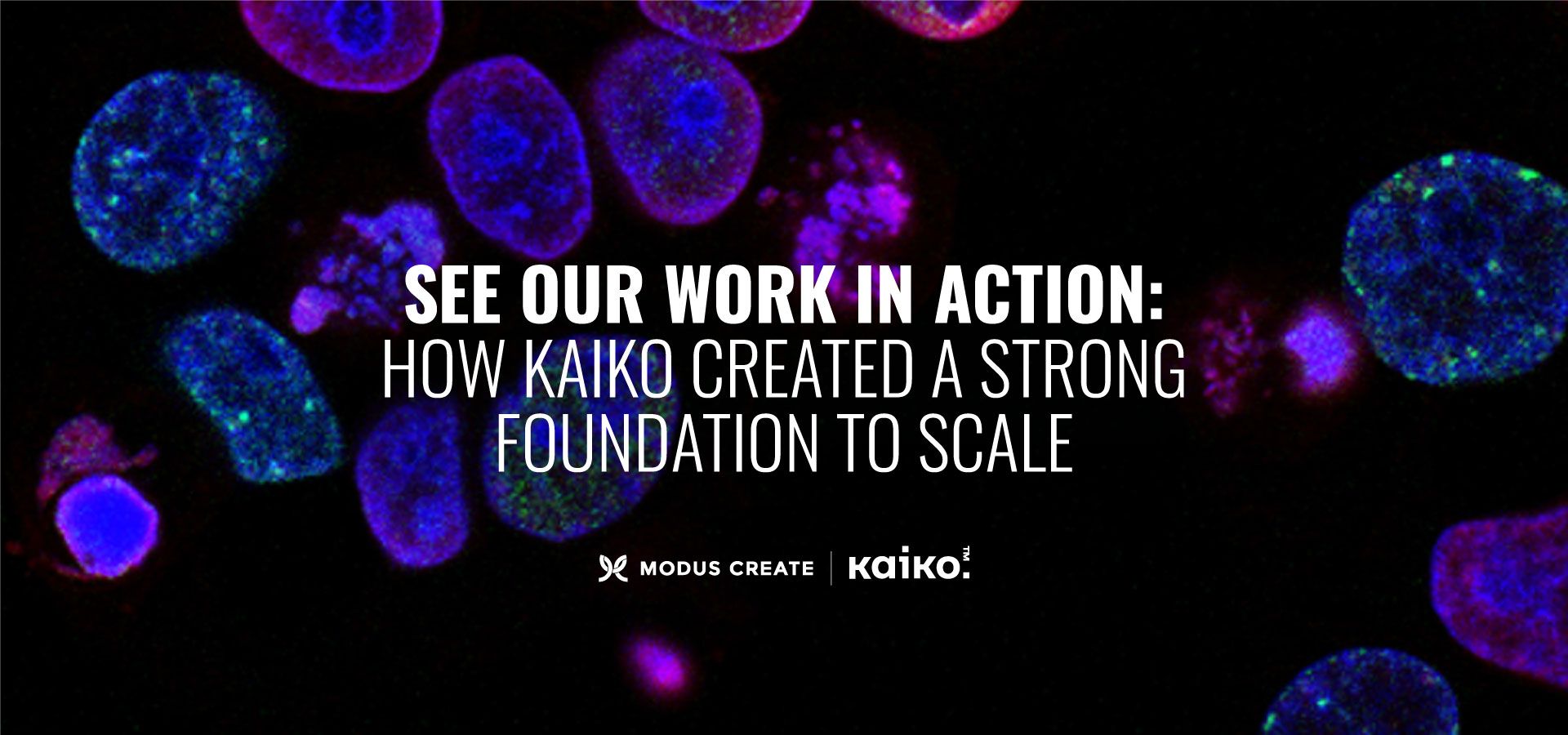Strategies to mitigate AI security and compliance risks


Table of contents
Subscribe via Email
Subscribe to our blog to get insights sent directly to your inbox.
AI coding assistants like GitHub Copilot, OpenAI ChatGPT, and Amazon Q have accelerated the adoption of large language models (LLMs) across software development teams. According to McKinsey, 65% of executives report that their organizations are exploring and implementing AI solutions.
Yet in the rush to deploy, AI security and compliance risks are often overlooked. As more organizations encourage AI-assisted coding to boost productivity, they may be introducing systemic vulnerabilities that are easy to replicate and hard to detect.
When many developers rely on the same AI models trained on the same data, the code they produce tends to converge in style and approach. This “generative monoculture” effect can result in independent codebases sharing nearly identical patterns, functions, libraries, and even mistakes.
From a security standpoint, this uniformity makes it easier for a single flaw to ripple across systems, multiplying the risk of financial losses, reputational damage, and regulatory violations. In a period of rapid transformation fueled by GenAI, organizations can’t afford to treat security and compliance as an afterthought.
What are the top AI security and compliance risks?
AI models are at risk from adversarial attacks where malicious actors manipulate input data to deceive the system. Despite the growing awareness of AI security and compliance risks, organizations still need to prepare.
A survey by the IBM Institute for Business Value found that 75% of executives believe that AI security is a top priority. Yet, PwC reports that 60% of organizations have experienced security incidents related to AI or machine learning.
Keeping up with changing security threats
The vast amounts of data required to train AI models create new attack surfaces for cybercriminals to exploit. For instance, AI-powered chatbots and virtual assistants may inadvertently expose sensitive information if not properly secured. The complex nature of AI algorithms can make it difficult to detect and trace security breaches, leaving organizations vulnerable to prolonged and undetected attacks.
Navigating complex data privacy and security regulations
There are also compliance risks. Many industries are subject to strict data privacy and security regulations, such as GDPR, the EU AI Act, or the Health Insurance Portability and Accountability Act (HIPAA) for the healthcare sector. AI systems often process large volumes of personal or sensitive data, making compliance with these regulations challenging. EY’s research indicates that 60% of executives believe AI regulations will significantly impact their business operations.
Further, the “black box” nature of some AI algorithms can make it challenging to explain decision-making processes, which is a requirement in specific regulated industries. This lack of transparency can lead to unintended bias or discrimination, potentially resulting in legal and reputational risks for organizations.
The ethics of AI
Beyond mitigating security and compliance risks, the ethical implications of AI deployment are similarly important to consider. AI systems can perpetuate or amplify existing biases, leading to unfair or discriminatory outcomes.
This is particularly concerning in hiring, lending, or criminal justice, where AI-driven decisions can have a significant impact on individuals’ lives. Organizations must also grapple with the ethical use of AI in data collection and analysis. The ability to gather and process vast amounts of personal data raises questions about privacy and consent that many businesses aren’t equipped to address.
Organizations require specialized knowledge and resources to mitigate AI security and compliance risks effectively, but as McKinsey shows, they don’t feel confident doing this; 65% of executives believe they are unprepared to manage AI-related risks. Accenture’s 2024 risk survey further emphasizes this concern, finding that 80% of executives perceive these risks as increasingly complex and severe.
Understanding homogenized code patterns from LLMs
Large language models (LLMs) often generate code that converges on familiar, statistically common patterns. This results in a “generative monoculture,” where similar coding styles, libraries, and implementations appear across projects. While this consistency may streamline development, it has significant downsides.
For instance, LLMs tend to suggest the same libraries or frameworks for similar tasks, leading to widespread dependence on specific tools. Developers may also unknowingly adopt the same architectural patterns, resulting in uniform codebases that share both strengths and flaws. This uniformity increases the risk of vulnerabilities spreading across systems. A single exploit in one instance can be replicated in others, creating systemic weaknesses.
Security risks of a software monoculture
A software monoculture amplifies security risks by reducing code diversity. When many systems rely on identical patterns, a single vulnerability can have a widespread impact.
For example, flaws in an LLM-generated password reset function could allow an attacker to exploit every instance of that code across applications, magnifying the fallout.
Historical examples, like theLog4Shell vulnerability and Heartbleed bug, demonstrate how shared dependencies can lead to catastrophic failures. Similarly, AI-induced monocultures make systems easier to target, as attackers can quickly identify and exploit recurring patterns in AI-generated code. Uniformity removes the safeguards provided by varied approaches, leaving organizations more exposed to cascading threats.
Do LLMs introduce insecure coding patterns?
Early evidence suggests LLMs often generate code with built-in vulnerabilities. Studies reveal that developers using AI assistants produce more security flaws while remaining overconfident in their outputs. LLMs inherit unsafe practices from their training data, leading to outdated or insecure defaults, such as using deprecated cryptographic algorithms or omitting critical defensive measures like input validation.
Even when explicitly prompted for secure code, LLMs frequently fall short. They mirror average patterns from their datasets rather than prioritizing rigorous security. Without careful oversight, AI models risk standardizing insecure coding practices across projects, turning isolated vulnerabilities into industry-wide problems.
Mitigating monoculture-driven risks
Organizations can mitigate these monoculture-driven AI security risks with intentional strategies:
- Threat modeling:Include monoculture risks in your threat modeling. Identify shared dependencies and plan for potential widespread vulnerabilities. Contingency measures like diversified libraries or patch-management systems can mitigate risks.
- Rigorous code reviews:Treat AI-generated code as drafts requiring scrutiny, especially for security-sensitive sections. Pair manual reviews with AI-assisted tools to flag potential flaws, ensuring no issues are overlooked.
- AI usage policies:Establish standards to guide developers in prompting LLMs for secure practices. Use annotated pull requests to highlight AI-generated code for more thorough reviews.
- Developer training:Train teams to recognize the pitfalls of relying on AI-generated code and emphasize the importance of secure coding principles. Encourage developers to question AI outputs and modify them for robustness.
- Continuous monitoring:Integrate static analysis tools and runtime monitoring into your workflows to detect vulnerabilities introduced by AI-generated code. Proactively plan incident responses to rapidly address shared vulnerabilities.
Why is cybersecurity central to compliance risk mitigation?
Looking more broadly, as organizations increasingly rely on AI and other advanced technologies, the risks associated with data breaches, cyberattacks, and unauthorized access have become more significant. Strong cybersecurity measures are necessary to protect sensitive information and comply with various regulations and industry standards.
One primary reason cybersecurity is central to mitigating compliance risks is the increasing emphasis on data privacy and protection. Regulations such as GDPR and the California Consumer Privacy Act (CCPA) impose strict requirements on organizations to safeguard personal data.
Cybersecurity is also crucial for ensuring compliance with industry-specific regulations. For example, HIPAA requires healthcare organizations to protect patient health information (PHI)
At the same time, the Payment Card Industry Data Security Standard (PCI DSS) mandates specific security controls for entities that process, store, or transmit credit card data.
Adherence to these regulations often involves implementing cybersecurity measures to protect sensitive information and prevent unauthorized access to it. Failure to comply can result in significant penalties.
As organizations increasingly rely on AI and other advanced technologies, the risks associated with data breaches, cyberattacks, and unauthorized access have become more significant. Strong cybersecurity measures are necessary to protect sensitive information and comply with various regulations and industry standards.
Practical strategies for mitigating AI security and compliance risks
As organizations rapidly adopt AI technologies, especially large language models (LLMs) like those offered by AWS Bedrock, it’s crucial to integrate security measures throughout the software development lifecycle (SDLC).
Organizations should seek comprehensive security solutions that align with the Secure Software Development Lifecycle (SSDLC), ensuring that security is embedded throughout the entire software development lifecycle, from inception to deployment. Here are key strategies to mitigate AI security and compliance risks.
Conduct risk assessments focused on AI and LLM applications
Understanding the unique risks associated with AI systems is the first step in safeguarding your organization. In-depth security assessments tailored to AI and LLM applications are a great place to start. By conducting comprehensive risk assessments, you can understand your current security posture and provide actionable insights to enhance your defenses.
- Take advantage of white box assessments:White box assessments thoroughly evaluate your software development and deployment ecosystems, including CI/CD pipelines, cloud environments, and source control systems. These assessments go beyond standard checklists, offering a full-stack approach that considers each application component and its interdependent chains of risk.
- Leverage MLSecOps expertise: It’s critical to leverage expertise in machine learning security operations (MLSecOps) to identify vulnerabilities specific to AI and LLM applications. This proactive approach enables you to allocate resources effectively and address critical issues before they escalate.
Regular risk assessments are essential for identifying potential vulnerabilities in your AI systems. Prioritize mitigation efforts based on data sensitivity, model complexity, and regulatory requirements. This proactive approach allows you to allocate resources effectively and address critical security and compliance issues before they escalate.

To illustrate our MLSecOps expertise, consider our work with Kaiko, a healthcare startup specializing in AI support for cancer research facilities. Kaiko needed a solid technical foundation to build its machine learning-based data framework. Here’s how we helped them
- We created Kaiko’s coding infrastructure, workflows, and CI/CD framework, ensuring security was embedded at every level.
- We automated build, test, and deployment pipelines using GitHub Actions and enhanced the developer experience, increasing their throughput.
- We helped Kaiko become more visible in open-source communities, attracting senior engineering talent and fostering a culture of security awareness.
Develop a comprehensive AI security program
Implementing effective data governance is essential, but it must be part of a broader security strategy that addresses the complexities of AI and LLM applications. It’s important to have comprehensive security programs tailored to your unique needs.
- AI security strategy capability: An AI security strategy service allows you to holistically measure your security maturity across various domains within the SSDLC. This provides a detailed analysis of your security controls and policies, offering multiple options and timelines to improve metrics and report progress over time.
- Compliance alignment: Seek expertise that helps you navigate the complex regulatory landscape associated with AI technologies. This includes ensuring your data governance policies comply with regulations like GDPR, the EU AI Act, and industry-specific standards such as HIPAA.
Implement advanced security engineering for AI systems
AI models, particularly LLMs, present unique risks that require specialized security engineering solutions. Consider bespoke security engineering services to enhance your AI systems’ security posture.
- Monitoring systems for MLSecOps: Monitoring systems for MLSecOps enable real-time detection of anomalies and potential threats within AI applications. You should implement an approach that transcends standard model governance frameworks by providing a comprehensive solution that addresses the full stack of technologies comprising AI applications.
- Security automation: By integrating threat intelligence, data lakes, and security operations automation into your infrastructure, you can maintain the integrity and reliability of your AI models. We recommend leveraging AWS security services and AWS Bedrock’s features to strengthen your defenses.
In the end, the goal is to ensure your AI systems are protected against adversarial attacks and unauthorized manipulations.
Integrate continuous monitoring and evaluation into AI workflows
Continuous monitoring is critical for maintaining the security and compliance of AI systems in a rapidly evolving threat landscape. By integrating key sources and monitoring solutions into your AI workflows, you can achieve:
- Real-time visibility: Real-time visibility into system performance and security enables prompt detection and response to security incidents.
- Adaptive solutions: Effective monitoring systems are designed to adapt to the dynamic nature of AI systems, ensuring ongoing compliance with regulations and standards.
Adopt a holistic security approach for AI and LLM applications
Mitigating AI security risks requires more than isolated solutions-it demands a holistic security program that considers the entire technology stack of AI and LLM applications. We advocate for comprehensive security program development that integrates all aspects of your AI systems.
- Full-stack security program development: Design and execute security programs that cover everything from risk assessments and engineering to strategic planning and implementation. This should include pre-planning for audits and incorporating best practices in AI security.
- Integration with SSDLC: Embrace an approach that ensures security is embedded throughout the SSDLC, reducing vulnerabilities and enhancing overall system integrity.
Manage third-party risks
AI systems often rely on third-party vendors and services, introducing additional security risks. It’s essential to manage these risks effectively through:
- Vendor assessments: Evaluate third-party security practices, ensuring they meet your security standards.
- Vendor management programs: Comprehensive programs include clear contractual obligations for data protection and compliance, regular audits, and monitoring of vendor access to your systems and data.
Your security is only as strong as your weakest link. By effectively managing third-party risks, you strengthen your overall security posture.
Benefits of mitigating AI security and compliance risks
Taking a proactive stance on AI security and compliance positions your organization as a leader rather than a follower. Below are some ways your organization will benefit from mitigating AI security and compliance risks.
Enhanced brand reputation and consumer trust
Your brand’s reputation is intrinsically linked to your ability to protect sensitive information and use AI ethically. Implementing stringent security measures and ensuring AI compliance helps you demonstrate a commitment to responsible innovation. This can significantly enhance your brand in the marketplace, setting you apart from competitors perceived as less trustworthy or technologically savvy.
In addition, when customers feel confident that their data is secure and AI systems are being used ethically, they’re more likely to engage with your organization.

Operational efficiency and financial protection
Effective governance, risk management, and compliance (GRC) practices don’t just mitigate risks-they can also streamline your operations. By implementing comprehensive AI security and compliance measures, you can:
- Reduce downtime caused by security breaches or compliance issues.
- Improve decision-making processes through better data management and analysis.
- Optimize resource allocation by identifying and addressing inefficiencies.
The benefits are equally compelling from a financial perspective. You protect your organization’s bottom line by avoiding fines, penalties, and legal disputes related to AI misuse or data breaches. Consider the potential costs of a significant security incident or compliance violation-not just in immediate financial losses but also long-term damage to your reputation and market position.
Avoidance of legal and regulatory penalties
As AI technologies evolve, so do the legal and regulatory frameworks surrounding them. Complying with regulations like the EU AI Act helps avoid costly penalties and strengthens legal defensibility. This way, you position your organization to:
- Adapt quickly to new regulations without disrupting operations.
- Avoid expensive legal battles and regulatory investigations.
- Maintain a competitive edge in markets where compliance is a key differentiator.
Remember: The cost of non-compliance often far outweighs the investment required to implement adequate security and compliance measures. The goal isn’t just to avoid pitfalls-it’s to harness AI’s full potential while maintaining the highest security standards. When building an effective AI strategy, security should come first.
AI is driving innovation while fueling new security risks. Make cybersecurity a core part of your culture.
Learn how Modus Create’s AI security services can help your business →

William Reyor is the Director of Security Engineering at Modus Create. He has a combined expertise in DevSecOps, AI/LLM security, and software supply chain integrity, with a rich experience in incident response, having previously come from Raytheon and Disney. His career in tech is marked by a commitment to inclusive innovation and leading security strategies that prioritize not just the strategic but the practical. He actively contributes to the community, organizing Connecticut's BSides conference since 2011. He recently released Defensive Security Handbook 2nd Edition with O'Reilly in early 2024.
Related Posts
Discover more insights from our blog.


